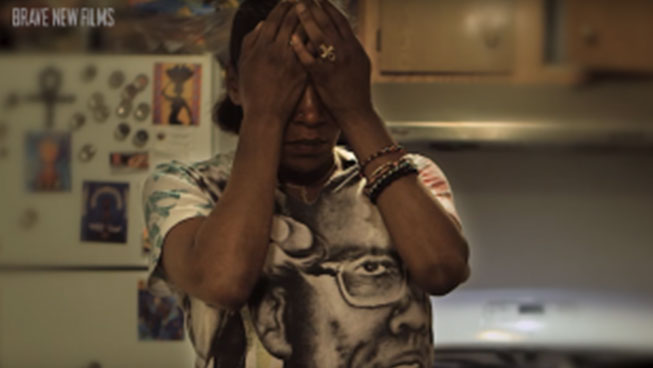
Most Americans know little about how the bail system targets, extorts and impoverishes the poor and communities of color.
By Mehak Anwar / Brave New Films
It’s no secret that the criminal justice system in the United States is deeply flawed. With over two million people incarcerated, over 80 billion dollars being funnelled from the pockets of taxpayers to prisons, and thousands of people serving time for nonviolent offenses, it’s apparent that this country is failing to deliver on its promise of “liberty and justice for all.”
Nowhere are these inequities in our criminal justice system more apparent than in our broken money bail system. Yet, most people living in the United States know little to nothing about how money bail disenfranchises low-income people of color and feeds into mass incarceration.
That’s why Brave New Films has created “The Bail Trap,” a video series on the realities and myths of money bail. Our recent screening of the films for around 200 students at New Roads School in Santa Monica, CA reinforced the importance of educating the next generation to take action. Not only were students engaged by the topic of money bail, but they were also eager to learn concrete steps they could take to spearhead change in their own communities.
What is money bail?
The original intent of money bail was simple: make sure the accused appears at trial. Small amounts of money were assigned to cases as collateral to make sure defendants showed up to a court date for a fair assessment of their case. Fairness within bail even extends into the U.S Constitution, which instructs that bail may not be “excessive.” But because of the vague and broad rules regarding bail, judicial officers started to use arbitrary measures to set bail amounts, and the system was often prone to corruption and abuse—so much so that 90 percent of all people stuck in jail are there because they can’t afford to post bail, not because they’ve been convicted of any actual crime.
The United States is one of two countries in the world that allows for-profit money bail, an industry backed by large insurance companies that authorize billions in bonds every year. For those who can’t afford absurdly large bail amounts, which can cost tens of thousands of dollars for simple misdemeanor crimes, these glaring flaws in the system can drastically alter their quality of life and undermine their constitutionally guaranteed presumption of innocence.
Disparate effect on low-income communities of color
The use of money bail disproportionately impacts low income, Black/African American, Latina, and Indigenous communities, and is not guided by any national standards that help ensure fairness in the system. Inability to pay money bail often results in people sitting in jail for weeks, months, or even years as they wait for their trials. It can also cause people to take bad plea deals to get out of jail sooner, even if they’re innocent. Those who seek out commercial bail options often get trapped in scams that lock people into interest-driven payment plans. The costs get hiked up so high people end up paying more than the original bail amount.
Money bail is a criminal justice issue, a racial justice issue, and an income inequality issue. By educating the next generation of change makers about its harmful effects on families and communities, we can make a difference in the outcomes of the lives of countless people. The screening of “The Bail Trap” at New Roads School demonstrated that young people are invested in mobilizing and creating meaningful change—and educators everywhere can be part of the movement.
(Are you an educator, activist, or organizer? Do you care deeply about social justice issues and education? Join Brave New Films’ movement to end money bail once and for all by visiting www.bravenewfilms.org/bail_trap to register for a free screening and education guide for your classroom, faith organization, or community!)














